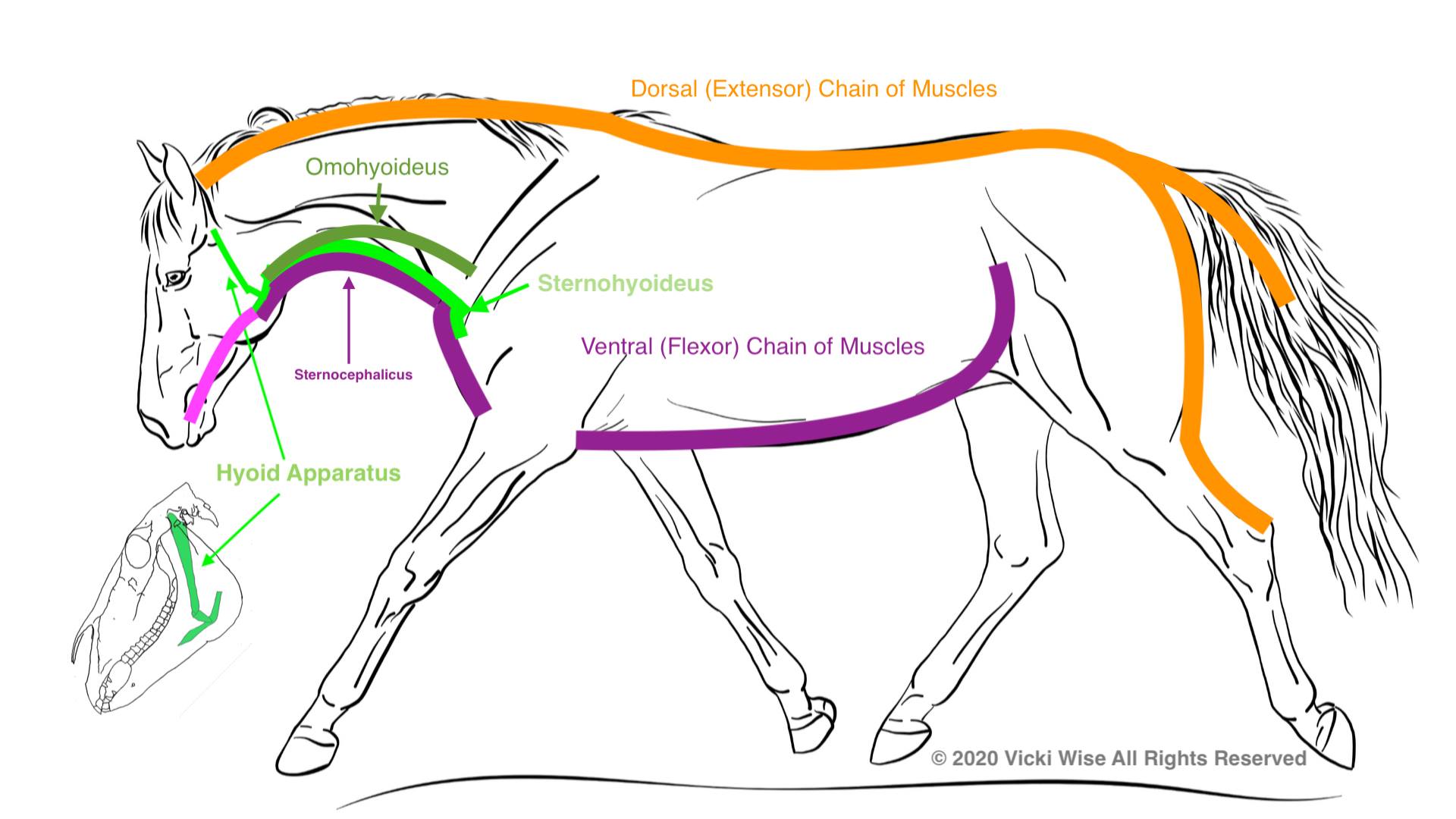Featured, Training, Training and Management
How does bridle fit affect the horse’s ability to engage behind?
An excerpt from our feature on bridle fit by Sue Stanbridge, as she discusses the hyoid apparatus and its affect on the horse’s ability to engage behind

The hyoid apparatus
The tongue is attached to a little group of bones at the back of the skull called the hyoid bones. These are an incredibly important and unique group of bones. Firstly, they are not attached to any other bones using joints; they are attached with ligaments.
The front bone embeds into the tongue with ligaments, it then attaches to two long thin bones, which are situated inside the jaw that attach to the TMJ. Behind these are two small bones that attach to muscles, which run down the lower neck into the scapula, along the abdominal wall and into the pelvis.
Problems with bridle fitting here, which restrict the ability of the tongue and lower jaw to move, will actually shut down the ability of the horse to recruit the lower ventral chain of muscles. If he cannot mobilise his jaw and tongue, he will send tension through the hyoid bones, up into the TMJ, down the muscles of the neck, through the thoracic sling and along the abdominal wall.
This impacts his ability to lift his back and engage his hindquarters. The horse is then put in a U shape; putting pressure along the dorsal spinal processes, disconnecting his shoulder sling and raising his head by recruiting the muscles underneath.
This is when we as riders, get locked into a spiral of asking our horses to lengthen their frame, drop their head, lift their back and engage their hindquarters but, not allowing them to naturally use themselves biomechanically correctly.
Read the full article here
